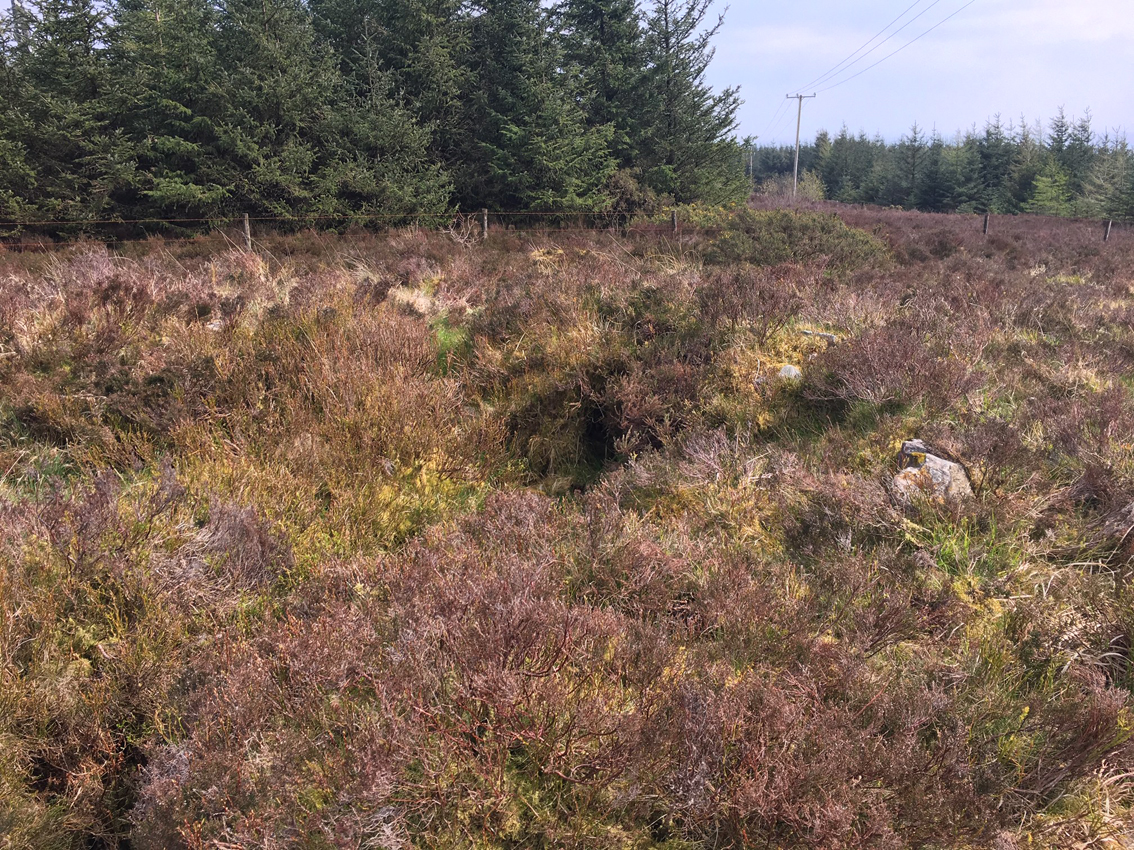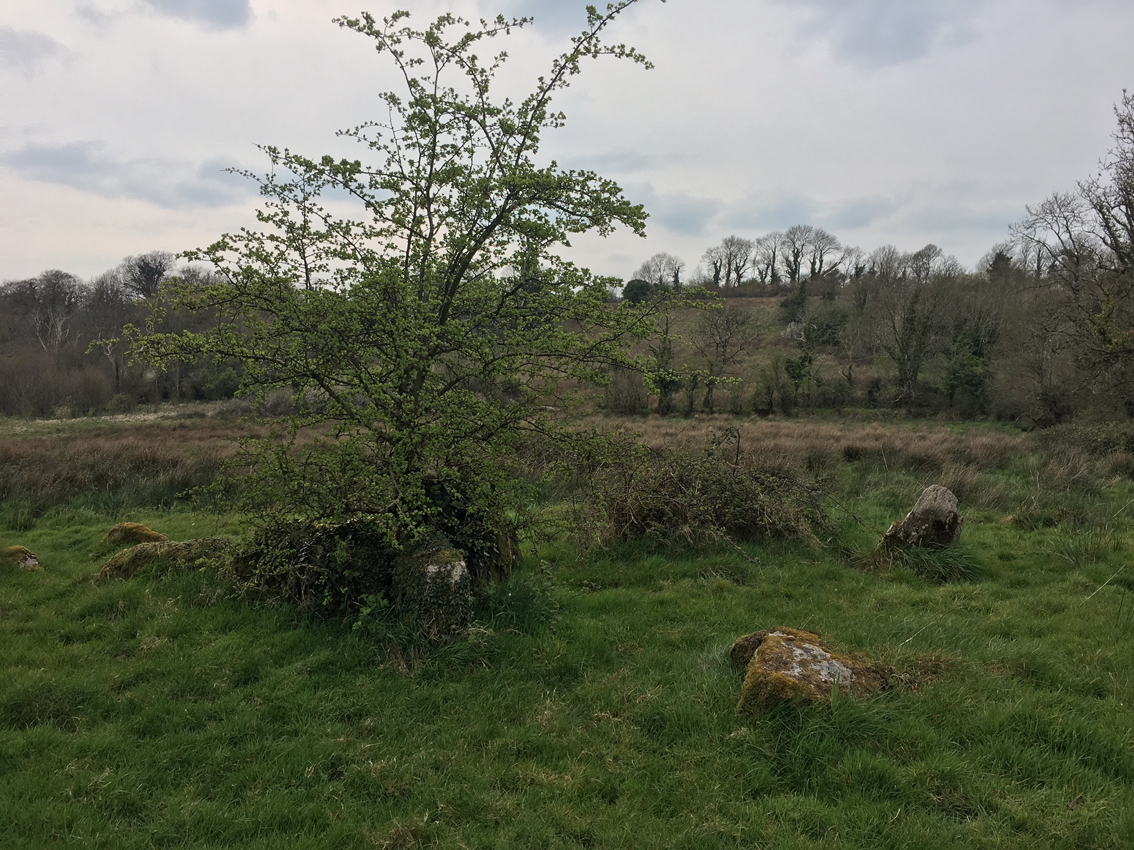
The one remaining roofstone at this ruined wedge tomb rests on a padstone seen here to the left. The stone in the foreground is the septal stone at the front end of the chamber.

The one remaining roofstone at this ruined wedge tomb rests on a padstone seen here to the left. The stone in the foreground is the septal stone at the front end of the chamber.

A new angle for me, with 10-year-old LM for scale. “There’s no way I’m going in there,” said she.


Possibly the most immense megalithic pressure point in Ireland.

From the back of the tomb. There’s been a good deal of disturbance to some of the cairn stones, somebody believing that it’s a good idea to build up the side-walling of the main gallery.

The ever vulnerable backstone of the gallery at Kilmashogue. Seems to be irresistible for use as a companion fireplace to your bag of cans.


Distorted pano of the western/south-western arc of the main Knowth mound.

This stone lies where it was found at the western entrance ‘forecourt’. The excavator, George Eogan, was restrained in his interpretation and re-construction at Knowth.




The eastern passage entrance. There is now a large concrete bunker built just beyond the bridge over the entrance stone and inside the mound. Yikes!


Quite the most stonerest of all the stones in Brú na Bóinne.





East towards Kilcoole marshes and the sea.


Looking west towards the Great Sugar Loaf.

Just over one-and-a-half metres tall, it’s made of a pinky/redish conglomerate.


The prostrate stone may have been a fifth in the row.

The stones are all very low, the tallest at three quarters of a metre. What seems like packing stones are adjudged to be field clearance.

The hill in the distance with the mast is Corn Hill with its cairns. I’d be more convinced by this stone row were it aligned onto the hill, but prehistory doesn’t always fit into what you want.

The capstone is resting of the fallen backstone. This would have been a fine little dolmen in its day.


Cloonfinnan has its own ecosystem. It’s been long abandoned, hidden away among the forestry, the type of site I usually give up on, but hey, thank science for the technology that dropped me right on top of it.

Shattered portal and fallen capstone. This took an effort to find and was a tangled mess – the second time today that I did a bit of a clean-up.

Herity published his book in 1974 and mentions recent digging here: “There are traces of recent digging in the centre. Mr. Lynch told me that no structure had come to light in the course of this digging.” I had a good root around under the heather and indeed, there is no sign of a chamber.
Exploring the archaeology of the World Heritage Site of Brú na Boinne

Shot taken from on top of the field bank, possibly partly the remains of the covering cairn.



Annaghmore portal tomb could not be closer to the road and is a survivor.


Looking east. This was a struggle to get to – the terrain is very rough and just south of here, in the direction of the second court tomb in the townland, it turns very marshy. The whole vicinity is up for sale, endangering these monuments.

Looking west across the court. The prostrate stone in the foreground was probably part of the court.

The gallery entrance – the stone on the left very much jamb-like, the one on the right not so. Most of the court stones are missing and I reckon the second entrance jambstone is gone the same way.

From the back of the gallery looking out into the court. The ground level has probably risen since the tomb was built.

From just outside the court, south down the gallery. The massive beech tree is the dominant feature here at this diminutive Leitrim monument.

Another view, inside the chamber, of the notch in the sidestone.